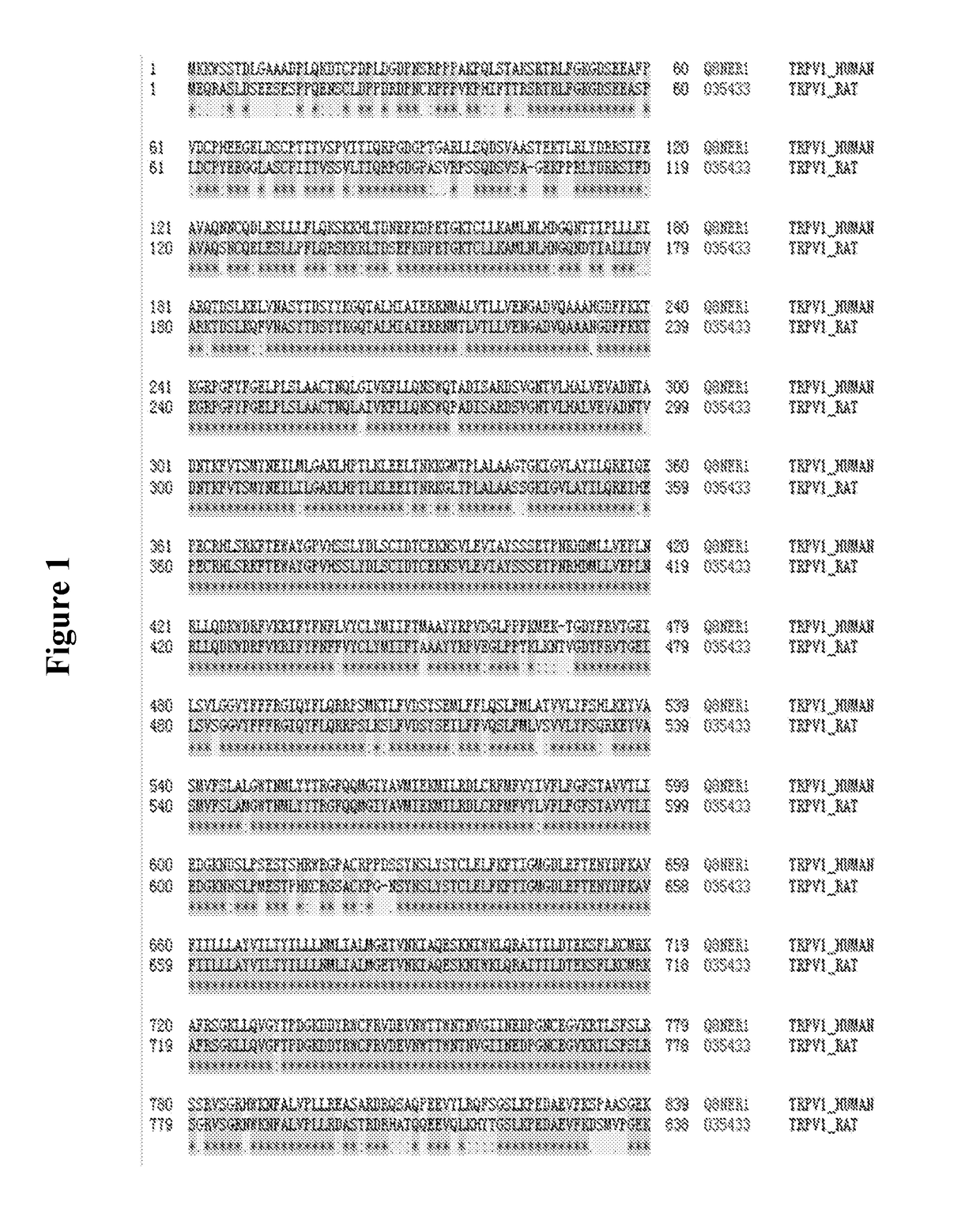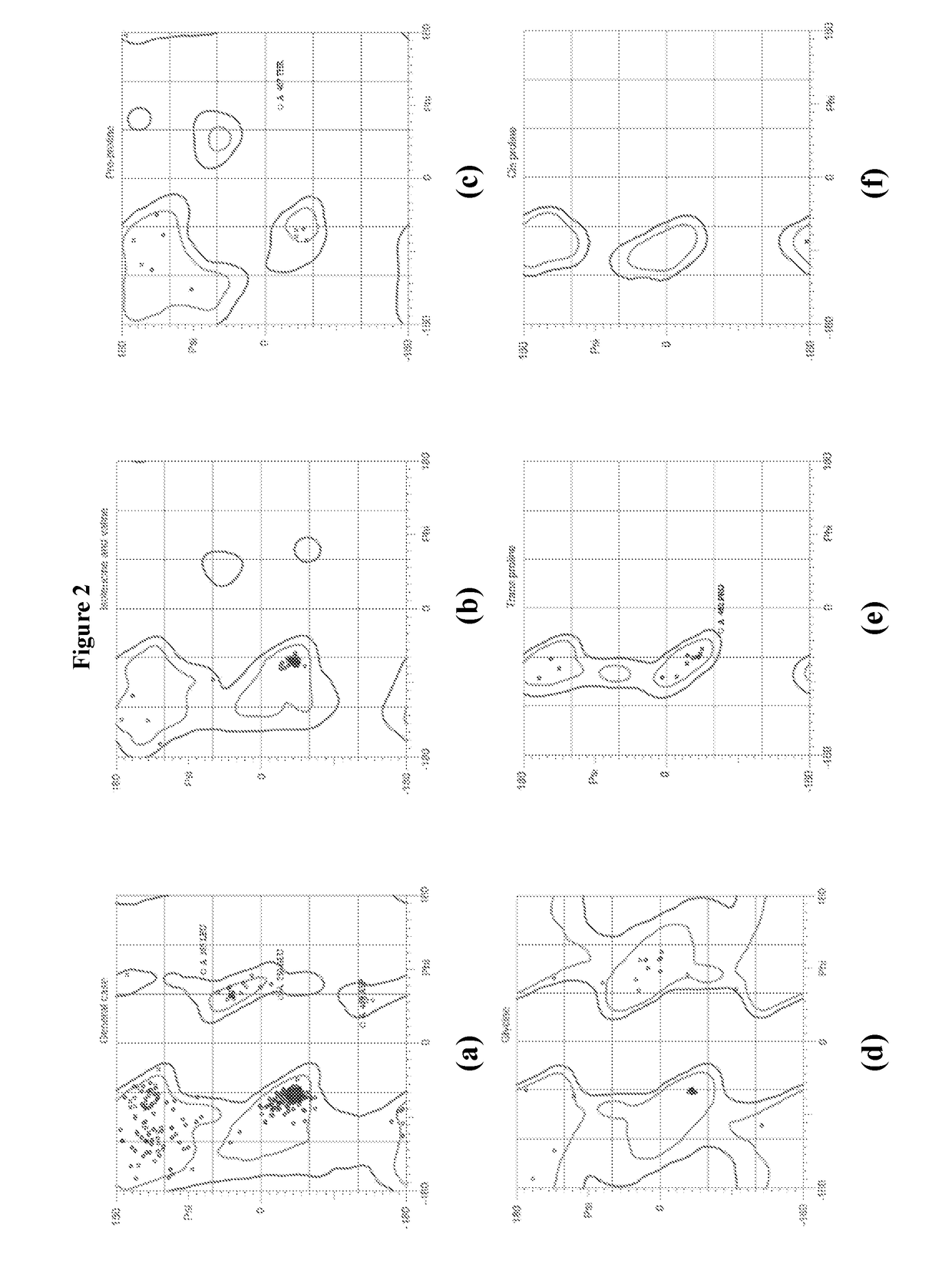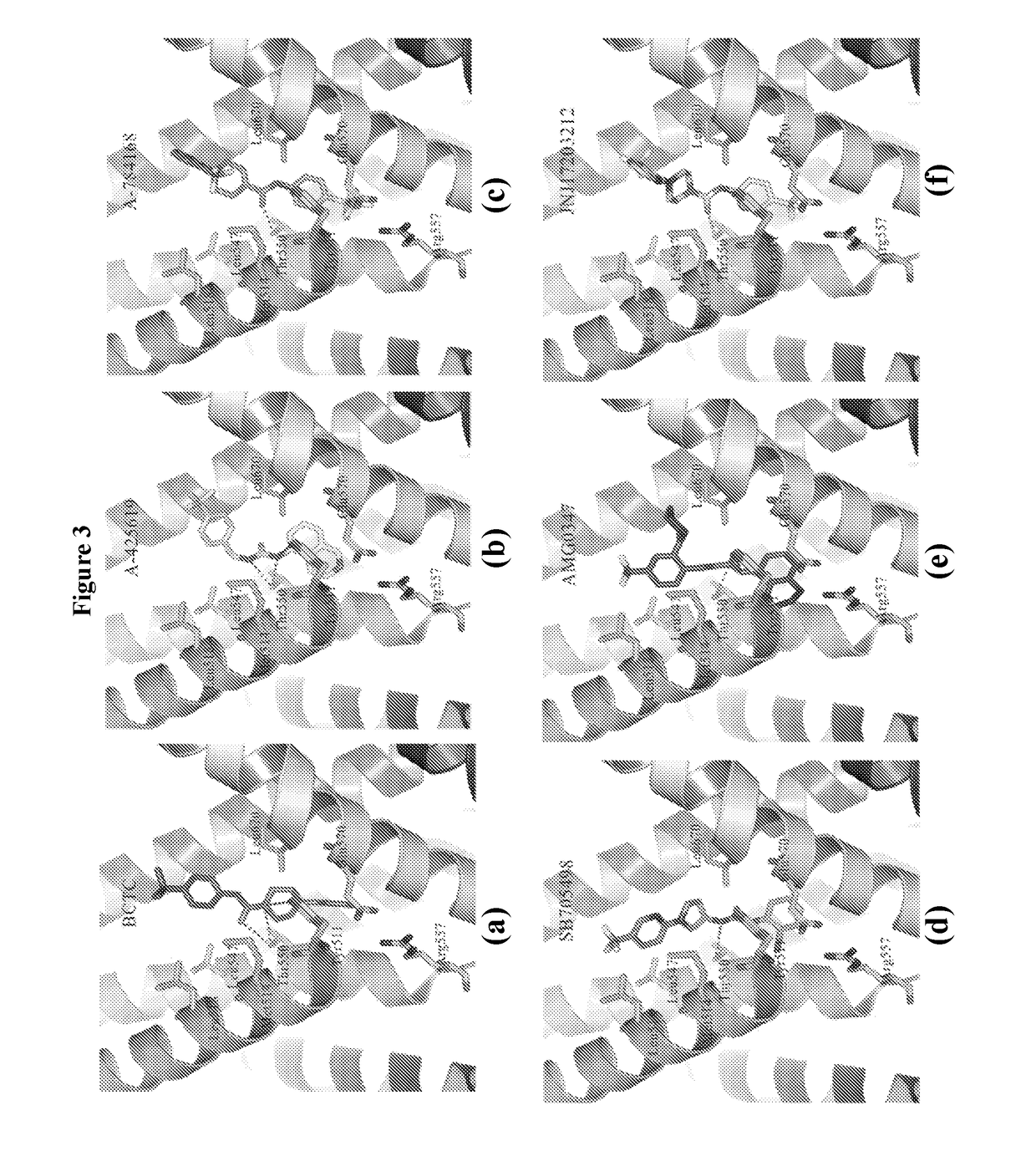hTRPV1 CHEMICAL AGENTS
a chemical agent and htrpv technology, applied in the field of htrpv1 chemical agents, can solve the problem of insufficient detail and insufficient resolution
- Summary
- Abstract
- Description
- Claims
- Application Information
AI Technical Summary
Benefits of technology
Problems solved by technology
Method used
Image
Examples
working examples
[0136]The present technology is further illustrated by the following examples, which should not be construed as limiting in any way.
[0137]Binding Competition Assay and Ca2+ Uptake Assay.
[0138]Materials.
[0139][3H]Resiniferatoxin ([3H]RTX, 37 Ci / mmol) was provided by Perkin Elmer Life Sciences (Boston, Mass.). Radioactive calcium (Ca-45, specific activity 5-30 Ci / g) was obtained from Perkin Elmer. Nonradioactive RTX was obtained from LC laboratories (Waltham, Mass.). Capsaicin was provided by Sigma-Aldrich (St. Louis, Mo.).
[0140]Stable hTRPV1 Expression Cell Line Subculture.
[0141]Tet-On induced CHO-hTRPV1 cells were cultured in maintaining medium (F12 supplemented with 10% TET-free FBS [Atlanta Biologicals, GA], 25 mM HEPES, 10 gtg / ml blasticidin and 250 gtg / ml geneticin (all from Invitrogen Life Sciences; Grand Island, N.Y.). TRPV1 protein was induced with induction medium (F12 supplemented with 10% FBS, 25 mM HEPES, and 1 μg / ml tetracycline) as described below for ligand binding and...
example 1
of Compound 1
[0147]The purpose of this example as to synthesize Compound 1, the structure of which is shown below:
[0148]Taking 2-chloro-1-isocyanato-4-nitrobenzene and 3-(trifluoromethyl)aniline as staring materials, compound 1 was synthesized using the same method as compound 2.
[0149]This compound yielded Ki values for capsaicin antagonism of 2.60±0.62 μM. It likewise inhibited [3H]RTX binding to hTRPV1 with Ki value of 1.11±0.21 μM.
example 2
of Compound 2
[0150]The purpose of this example as to synthesize Compound 2, the structure of which is shown below:
[0151]Compound 2 was synthesized by the method of the following Scheme.
General procedure of coupling reaction between isocyanate and amine.
[0152]1-isocyanato-2-methyl-4-nitrobenzene (1.6 mmol, 1 eqv.) was dissolved in dichloromethane (10 mL). 3-fluoroaniline (2.4 mmol, 1.5 eqv) was added, followed by triethylamine (3.6 mmol, 2.25 eqv) and the resulting mixture was stirred overnight at room temperature. A precipitate was formed, filtered and washed with dichloromethane. The solid particles were purified with flash column chromatography utilizing ethyl acetate / petroleum ether (1:2). The target compound was obtained as off-white solid (100 mg, yield: 34%). 1H NMR (400 MHz, DMSO-d6, ppm) δ 9.60 (s, 1H), 8.44 (s, 1H), 8.34 (d, J=8.80 Hz, 1H), 8.14-8.08 (m, 2H), 7.54 (d, J=11.60 Hz, 1H), 7.37-7.35 (m, 1H), 7.15-7.13 (m, 1H), 6.86-6.85 (m, 1H), 2.38 (s, 3H). LC-MS (ESI, m / z): 2...
PUM
| Property | Measurement | Unit |
|---|---|---|
| absolute temperature | aaaaa | aaaaa |
| volume | aaaaa | aaaaa |
| concentration | aaaaa | aaaaa |
Abstract
Description
Claims
Application Information
 Login to view more
Login to view more - R&D Engineer
- R&D Manager
- IP Professional
- Industry Leading Data Capabilities
- Powerful AI technology
- Patent DNA Extraction
Browse by: Latest US Patents, China's latest patents, Technical Efficacy Thesaurus, Application Domain, Technology Topic.
© 2024 PatSnap. All rights reserved.Legal|Privacy policy|Modern Slavery Act Transparency Statement|Sitemap



